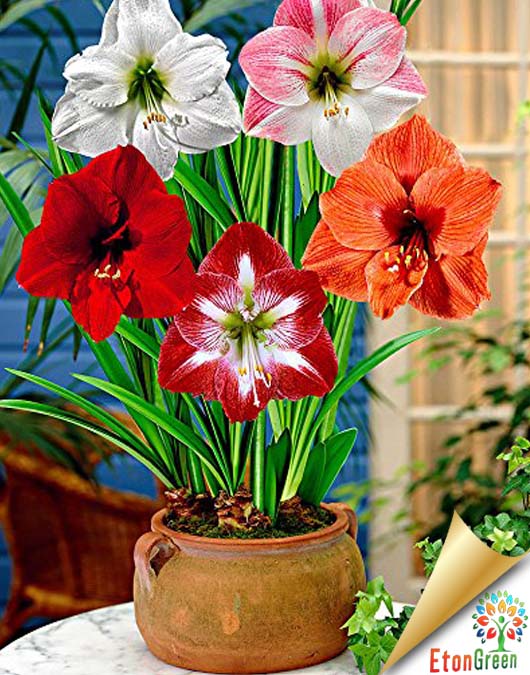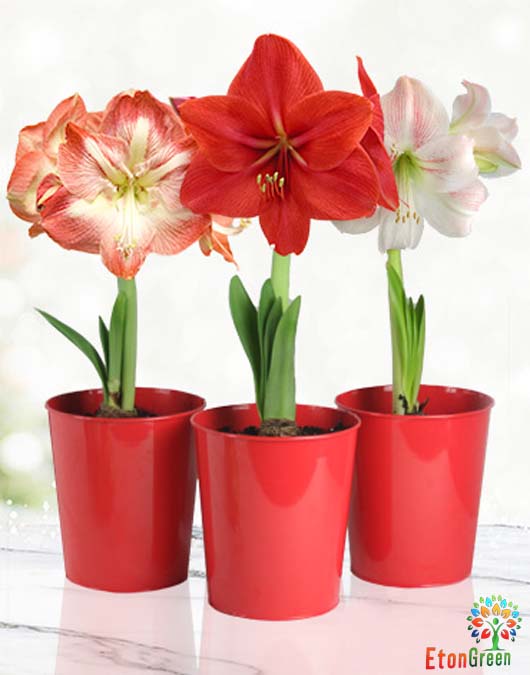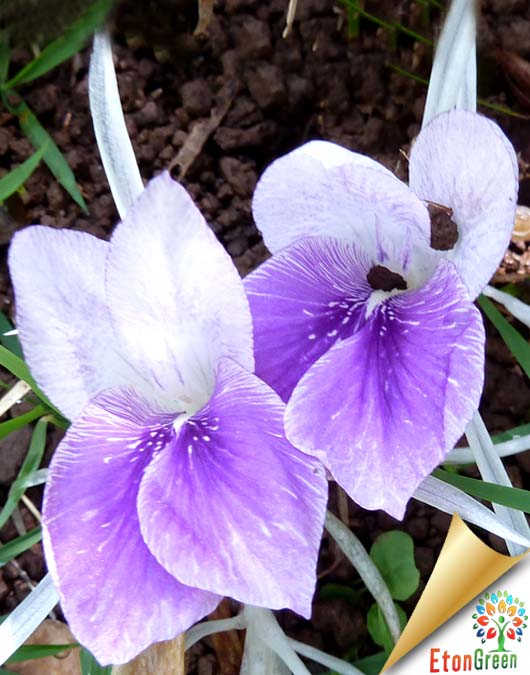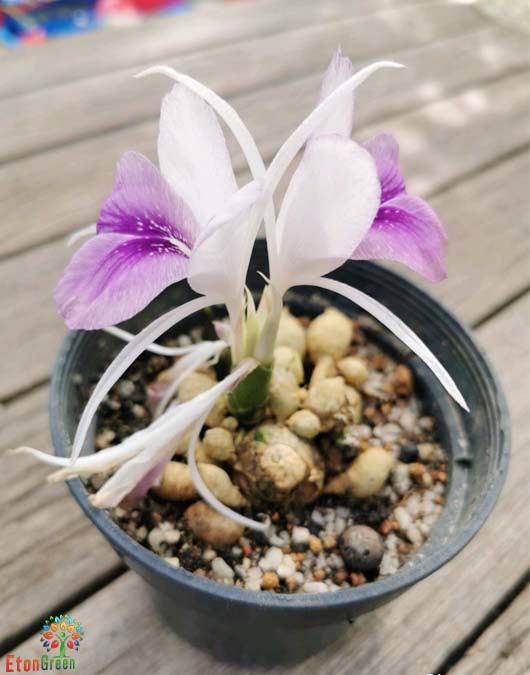- Shipping charge ₹ 90 for entire order
- These plants are perennial herbaceous bulbous plants. They generally have large fleshy bulbs. It is a plant with strap-shaped, glossy, green leaves and producing few large funnel-shaped flowers on a stout stalk, from March-May This plant is very suitable for planting in border, shrubbery and in a pot.
- The amaryllis lily is mainly used for ornamental purpose in garden, terrace, balcony, patio, etc.
- Common name: Hippeastrum
Color: The usual color is white with crimson veins, but pink or purple also occur naturally.
Bloom time: Late December until the end of June.
Height: 24 in/60 cm.
Difficulty level: EasyPlanting & Care
Amaryllis like their soil rich, but exceptionally well-drained, so ideally create a mix from one part well-rotted manure, one part horticultural grit or sand, and two parts leaf mould. Two-thirds good compost mixed with one-third grit also does fine.Sunlight: Full sunSoil: Well-drained soil.
Water: Keep soil moist throughout the growing season.
Temperature: 20°C
Fertilizer: Apply any organic fertilizer.
Harvesting: After the amaryllis has stopped flowering, it can be made to flower again. Cut the old flowers from the stem after flowering, and when the stem starts to sag, cut it back to the top of the bulb. Continue to water and fertilize as normal all summer, or for at least 5-6 months, allowing the leaves to fully develop and grow. When the leaves begin to yellow, which normally occurs in the early fall, cut the leaves back to about 2 inches from the top of the bulb and remove the bulb from the soil. Clean the bulb and place it in a cool (40-50 deg. F), dark place such as the crisper of your refrigerator for a minimum of 6 weeks. Caution: Do not store amaryllis bulbs in a refrigerator that contains apples, this will sterilize the bulbs. Store the bulbs for a minimum of 6 weeks.
Care:
- Once the plant is flowering, continue the watering and keep it out of direct sunlight, and slightly cooler (10-15°C), but as light as possible to promote a longer flower life.
- Each individual flower should last two or even three weeks before they brown.
- As each one fades, cut it off at the top of the stalk and then when the whole stalk is over and begins to sag, carefully cut it off just above the bulb nose.
- After flowering you can keep them from one year to the next.
- Feeding needs to continue and you want to water too, until the leaves begin to yellow in late summer/early autumn.
- At this stage, cut the leaves back to about 6cm (2½in) from the top of the bulb and remove it from the pot.
- Keep the bulb cool (5-10°C) and dark, to give it a dormant period for 8 weeks before you can encourage it to come into leaf and flower again When the temperature in your greenhouse falls to below 10C, bring them into the warmth and begin gentle watering again and your bulb will re-shoot.
- Don t re-pot it for the first couple of years; it hates root disturbance.
- The older and bigger the bulb, the more flowering stems you’ll get, so it’s worth the trouble of nurturing these mini football bulbs.
- Bulbs older than two years will produce offset bulblets.
- These may be left attached to the mother and re-potted with her, creating an amazing show, but its best to remove them carefully just before you replant and put them in their own individual pots.
- These little bulbs will take two years before producing their first flower, but it will be a proud moment when they do.
- Shipping charge ₹ 90 for entire order
- Kaempferia plant blooms the fragrant flowers. Its flower emerges straight from the ground, even before the leaves appear.
- Kaempferia is a stemless plant producing a pseudo stem with 2 to 4 erect leaves from an underground rhizome that has small tuberous roots. Flowering stems are produced from the rhizome when the leaves are not present. Flowers resemble small orchids or African violets but have just three petals.
- Water a plant when the soil feels dry to touch
- Water thoroughly in the summer and reduce watering for the winter & rainy season
- Try to water the plants in the morning around 8-10am
- You should remove dead, infected or damaged plant parts and throw in the garbage collector
- You should fertilize a plant mostly in the spring season, flower bud stage
- Plant season is in monsoon or autumn season
- Plant the bulb 3 inches deep and provide 3 to 4 inches of planting spacing
- The pointy part should face up
- Add some coarse sand or fine gravel to the soil to help improve the drainage Mulch the potting mix with organic material




